The OnLogic Helix HX500 Review: A Rugged Fanless 35W mini-PC
by Ganesh T S on September 17, 2021 10:00 AM EST- Posted in
- Systems
- Intel
- Fanless
- Industrial PC
- Passive Cooling
- Comet Lake
- OnLogic
Power Consumption and Thermal Performance
The power consumption at the wall was measured with a 4K display being driven through the DisplayPort port. In the graphs below, we compare the idle and load power of the OnLogic Helix HX500 with other low power PCs evaluated before. For load power consumption, we ran the AIDA64 System Stability Test, as well as our custom stress test with Prime95 / Furmark, and noted the maximum sustained power consumption at the wall.
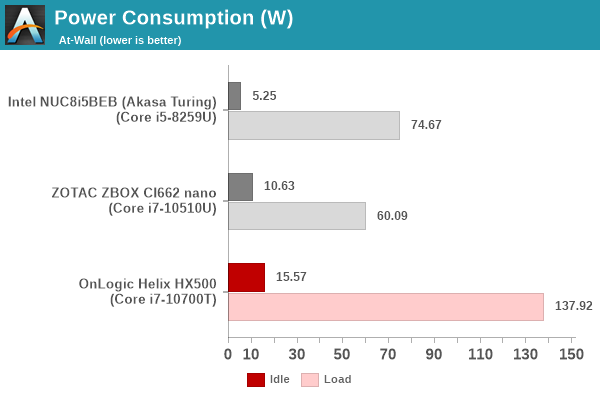
The PL1 / PL2 numbers are configured such that the instantaneous power consumption at the wall hit as much as 138W before settling down to a more comfortable (for the 120W power adapter) 60W.
Our thermal stress routine starts with the system at idle, followed by four stages of different system loading profiles using the AIDA64 System Stability Test (each of 30 minutes duration). In the first stage, we stress the CPU, caches and RAM. In the second stage, we add the GPU to the above list. In the third stage, we stress the GPU standalone. In the final stage, we stress all the system components (including the disks). Beyond this, we leave the unit idle in order to determine how quickly the various temperatures in the system can come back to normal idling range. The various clocks, temperatures and power consumption numbers for the system during the above routine are presented in the graphs below.
| OnLogic Helix HX500 System Loading with the AIDA64 System Stability Test | |||
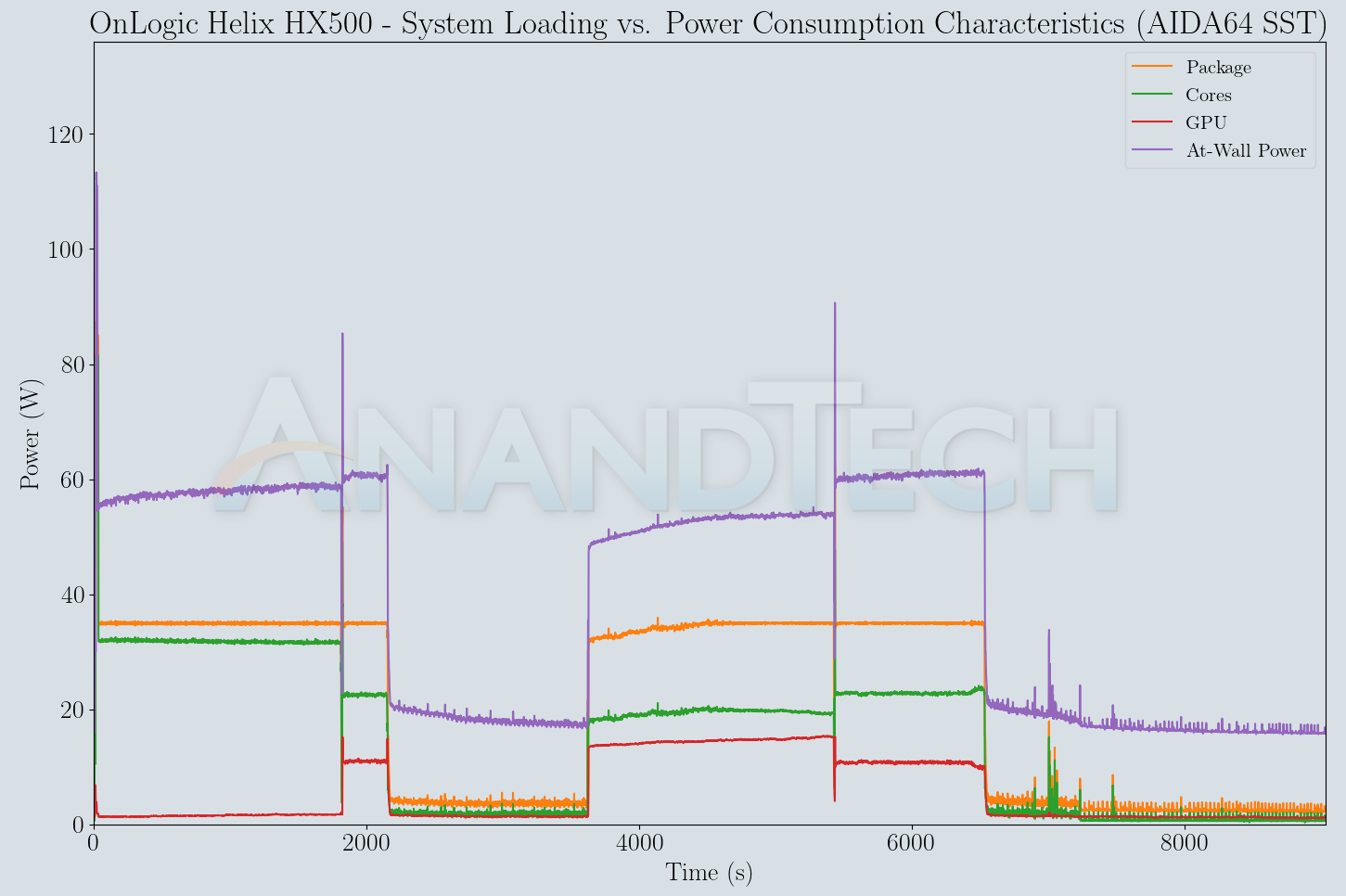
One of the unfortunate aspects during our AIDA64 SST was that the second and fourth workloads terminated in the middle without proceeding to completion. That can be observed from the power numbers above. Despite AIDA64 reporting a fatal error, the OS managed to keep running fine, as did our monitoring (evident from the full graph above, and the fact that AIDA restarted the next stress components set without issues).
Upon reaching out to OnLogic, their engineers repeated our tests, but did not manage to reproduce our findings.
After some analysis, OnLogic's engineers came to the conclusion that AIDA64 was interpreting a throttling flag as a failure. The HX500 was designed to throttle slowly starting at 95°C instead of the standard 100°C to improve reliability and the end customer experience. This allows the throttling to slowly ramp down the clocks as the high temperatures are hit when the systems are deployed in higher temperature environments. This avoids the sawtooth clocks / performance, which can negatively impact end user applications. Apparently, AIDA64 sees this as a hard failure and quits the test instead of continuing to run with the flags set by the implemented throttling mechanism.
Backing up OnLogic's claims, our custom stress test with Prime95 and Furmark had no problems in completing the workloads, while maintaining a steady 35W package power consumption, and around 60W at the wall.
| OnLogic Helix HX500 System Loading with Prime95 and Furmark | |||
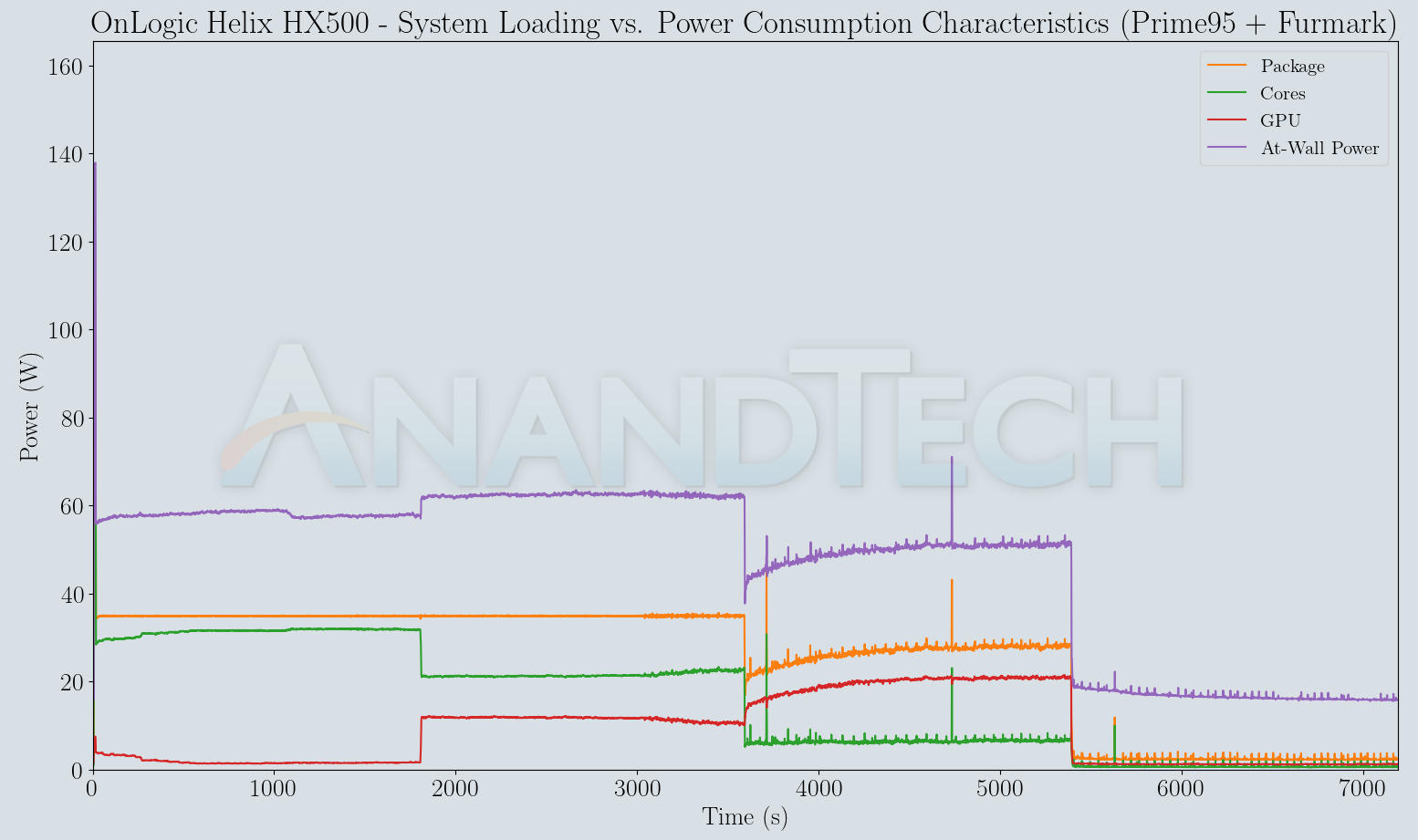
In terms of temperatures, we do end up around 98C in both our stress tests, and this matches OnLogic's own testing scenarios in their Helix manual. The key here is that the solution is able to handle 35W TDP for an extended duration (our testing is limited to around 3 hours, while the tests described in the Helix manual (PDF) run for a much longer duration).


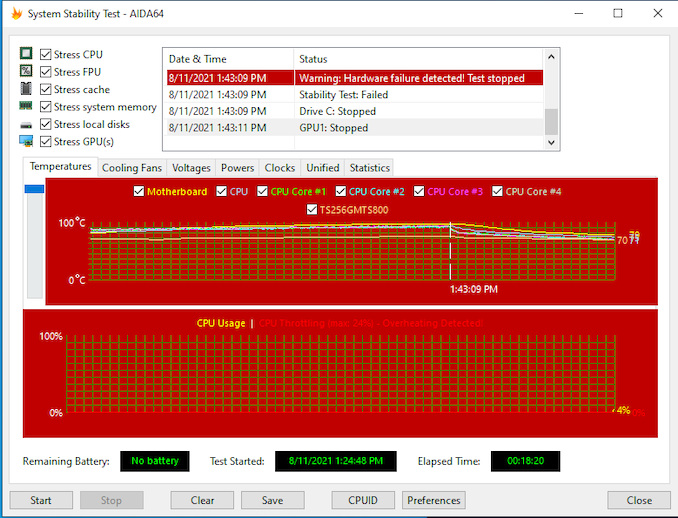
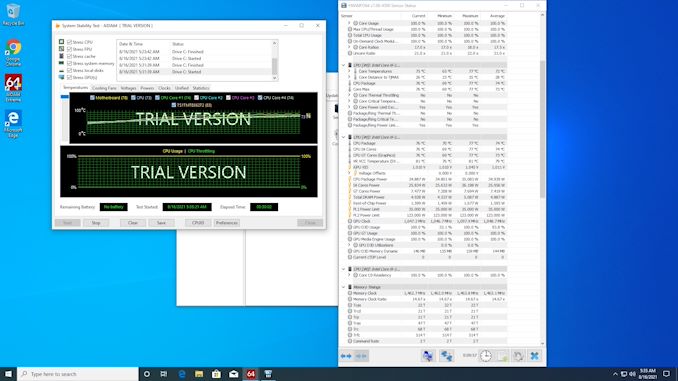








32 Comments
View All Comments
eastcoast_pete - Saturday, September 18, 2021 - link
Does this setup have anything resembling an IPx7 or X8 rating, i.e. is it sealed against water and dust ingress? Those would be among the reasons that might justify the price. Without any such protection, I wonder just how long it'd actually last in an environment that requires a fanless setup.Tomatotech - Saturday, September 18, 2021 - link
I run a K39 PC, which is the smallest cheap PC case on the market & only cost a few dollars from China, not the $1000 this HX500 costs. The K39 contains a standard mITX mobo, flex PSU, and a full size GPU. Works fine. My K39 isn't passively cooled, but if I left out the GPU and put in a low power chip then maybe it could be passively cooled.I also bought in the same package a K19, which is the same form factor as the HX500 (ie no GPU) possibly a little bit smaller and a K29 which is the same form factor as the HX610. Haven't built them yet, but these cases are really tiny, only cost a few dollars, and you can run anything from an iGPU to a full i9 / Ryzen 9 in them.
The cases are all-metal, and being so small, act as part of the radiator for the system. Easy enough to add some fins if needed. Definitely not waterproof or weatherproof but neither is this system.
Arnulf - Sunday, September 19, 2021 - link
"A few dollars" comes out to what, $200 shipped for cheap perforated aluminium box with dodgy PSU, and you are somehow comparing that to a complete PC (motherboard, CPU, RAM, SSD included) with chassis that actually works as a heatsink? Mind boggles ...The_Assimilator - Monday, September 20, 2021 - link
Which part of "The K39 contains a standard mITX mobo" was unclear to you?iammrr - Sunday, January 16, 2022 - link
How to buy this pc?Learn latest technology through whatsapp group-
https://jobingov.com/whatsapp-group-links/
FLORIDAMAN85 - Saturday, September 18, 2021 - link
Oh, look: an $800.00 Raspberry Pi.nandnandnand - Saturday, September 18, 2021 - link
An i7-10700T is somewhere between 5 and 50 times faster.Meteor2 - Sunday, October 3, 2021 - link
The $800 model comes with a CeleronBedfordTim - Monday, September 20, 2021 - link
Not having a 24V power input is disappointing.Wrs - Tuesday, September 21, 2021 - link
Err, the specs page clearly states 12-24v input. The adapter they sell is 20v.